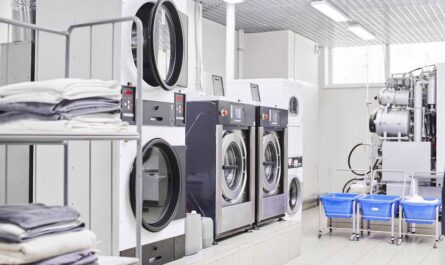Surveillance and Inspections
One of the biggest commercial uses of drones is for surveillance and inspections. Drones equipped with cameras are being used by various industries for monitoring infrastructure, observing crop growth, inspecting hard-to-reach areas and performing security patrols. Construction and infrastructure companies use drones to monitor progress on projects and inspect structures like bridges, towers and buildings. Farmers deploy drones to survey large tracts of land and assess crop and soil conditions. Utilities inspect power lines and pipelines that run over vast areas using drones. Public safety agencies have also started employing drone technology for search and rescue missions as well as monitoring public events. Drones provide a birds-eye view of areas in a cost-effective and timely manner compared to traditional surveillance techniques.
Agriculture and Environmental Monitoring
Agriculture is another major sector transforming with the use of Commercial Drones. Drones help farmers gather data to increase crop yield. They can detect diseased and unhealthy parts of crops using specialized cameras. This helps target the use of fertilizers, pesticides and water only where needed. Drones also monitor large swaths of land to detect signs of flooding, drought or infestation at an early stage. Environmental agencies use drones to monitor animal populations, map forests and assess signs of climate change. They help conservation efforts by providing real-time information across remote areas. Drones assist with reforestation drives by monitoring planting activity from above. Overall, they are aiding more sustainable farm and land management practices.
Precision Agriculture and Crop Analytics
Going beyond basic monitoring, drones now enable precision agriculture through advanced analytics. Multispectral and thermal cameras on drones capture images that help determine crop health, soil quality and moisture levels with a high degree of accuracy. Specific plant stressors like disease or nutrient deficiencies can be identified. Combined with GPS data, this information is analyzed using algorithms and artificial intelligence to create digital maps of entire fields. Farmers receive insights into precisely which areas need more or less water, fertilizer or pest treatment. This allows for variable application of inputs only where required, reducing costs and wastage. Drone crop analytics also help predict yields and monitor growth cycles to optimize harvesting schedules.
Aerial Photography and Filming
Commercial drones are a popular choice for high-quality aerial photography and videography. Real estate developers use them to capture aerial images and videos of properties and construction sites. These help potential buyers visualize locations better than street view images. Travel and tourism boards deploy drones to film scenic landscapes and landmarks from the air. The smooth, stabilized footage enables creating visually immersive promotional materials. Drone photography has grown popular for weddings, where they capture memorable shots of ceremonies held in beautiful outdoor locations. Filmmakers also utilize drones for establishing shots, getting unique perspectives in movies and documentaries. Media organizations deploy them for live coverage of news events unfolding over wide areas. Overall, drones have expanded creative possibilities in various visual content domains.
Delivery Services
Commercial delivery by drones is still at a pilot stage but expected to take off in the coming years. Several companies are working on building drones capable of delivering lightweight packages over short distances. This could potentially change the logistics industry by offering a faster alternative to ground transport. Use cases under development and testing include emergency medical deliveries, delivering retail goods to customers and transporting goods between supply chain points. Drone delivery promises efficiency gains like avoiding road congestion and reducing carbon footprint. Regulations will need to evolve to support mainstream adoption, addressing issues like security, traffic management and payloads beyond visual line of sight. Nevertheless, the concept shows promise especially for remote locations.
Public Safety and Emergency Response
Drones provide critical assistance during emergency response and disaster relief operations. Their ability to rapidly gather aerial imagery makes them invaluable for search and rescue missions. Equipped with infrared cameras, they locate trapped survivors even in hazardous environments. After disasters, drones map out the affected areas to guide response teams. They monitor evacuations, transport supplies, keep emergency workers safe during policing efforts and inspect infrastructure before reopening access. Firefighters use drones to tackle wildfires from above by spraying flame-retardant chemicals with greater precision. Law enforcement agencies deploy drones for crowd monitoring, traffic incident response and tactical missions. Overall, drones have empowered public safety agencies with a force multiplier for saving lives during exigencies.
commercial drones have found applications across diverse industry verticals like infrastructure, agriculture, real estate, media production, logistics and public safety. Their use is still evolving as technological capabilities expand. Advanced drones promise tremendous productivity and efficiency gains by automating tedious or dangerous manual tasks. Combined with AI and IoT, their potential to transform industries is immense. Of course, responsible adoption will depend on addressing user privacy and safety through prudent regulations. But as technology matures, commercial drones are set to become ubiquitous tools powering innovation.
*Note:
1. Source: Coherent Market Insights, Public Source, Desk Research
2. We have leveraged AI tools to mine information and compile it.




